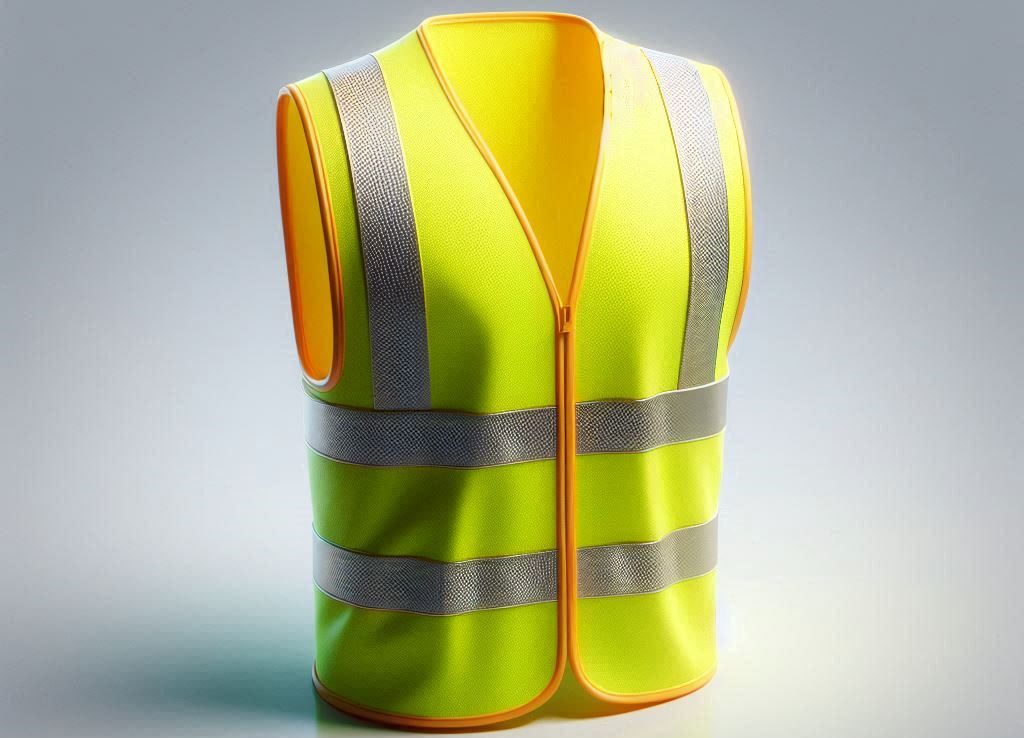When designing reflective safety vests, it’s crucial to adhere to standards and regulations that ensure visibility and safety. Below are the minimum design requirements for reflective safety vests based on ANSI, ISO, and UAE safety regulations:
1. ANSI/ISEA 107 (American National Standards Institute / International Safety Equipment Association)
- Classifications:
- Class 1: For environments with low traffic speeds (<25 mph), suitable for workers in parking lots or warehouses.
- Class 2: For environments with moderate traffic speeds (≥25 mph), suitable for road construction workers.
- Class 3: For environments with high traffic speeds (≥50 mph), suitable for highway workers or emergency responders.
- Color Requirements:
- Vests must be made of fluorescent colors (yellow, orange, or red) to enhance visibility in daylight.
- Reflective Material:
- Minimum of 3.16 square inches of retroreflective material must be placed on the vest.
- At least 2 inches wide and arranged in a pattern that allows visibility from all angles.
- Design Features:
- Should have a minimum of 2 vertical and 2 horizontal stripes for Class 2 and 3.
- Vests must be adjustable to fit comfortably over clothing and should not restrict movement.
- Care and Maintenance:
- Vests should be durable and capable of withstanding washing and cleaning processes without degrading reflective properties.
2. ISO 20471 (International Organization for Standardization)
- High-Visibility Clothing:
- Garments must be designed to ensure high visibility under all lighting conditions.
- Color Specification:
- Fluorescent colors (yellow, orange, or red) must be used in daytime conditions.
- Reflective Material:
- The reflective bands should be made of high-quality materials to ensure effective visibility at night or in low-light conditions.
- Minimum Area of Fluorescent Material:
- Class 1: Minimum area of 0.14 m² (215 sq. in.)
- Class 2: Minimum area of 0.50 m² (775 sq. in.)
- Class 3: Minimum area of 0.80 m² (1240 sq. in.)
- User Instructions:
- The vests should come with care instructions and be labeled in accordance with ISO 20471.
3. UAE Safety Regulations
- Compliance:
- Reflective vests must comply with international standards, including ANSI and ISO.
- Usage Requirements:
- Mandated for workers in environments with vehicle movement, such as construction sites and roadways.
- Marking and Labeling:
- Vests must be clearly labeled with information about the manufacturer, care instructions, and compliance with safety standards in both Arabic and English.
- Regular Inspections:
- Users should inspect vests regularly for damage, fading, or wear that could impair visibility.
Summary
In summary, when designing reflective safety vests, ensure compliance with the ANSI/ISEA 107, ISO 20471, and UAE safety regulations. Key features include appropriate class ratings based on traffic speed, use of fluorescent colors, sufficient reflective material, durability, and proper labeling. Regular inspections and maintenance are also vital to ensure ongoing safety in various work environments.

